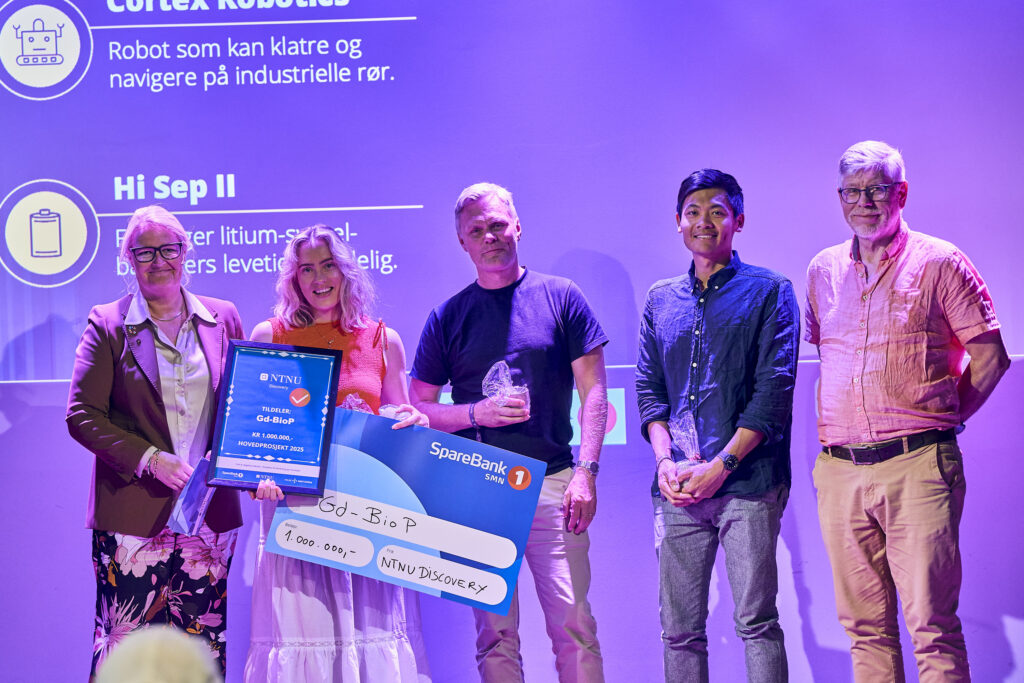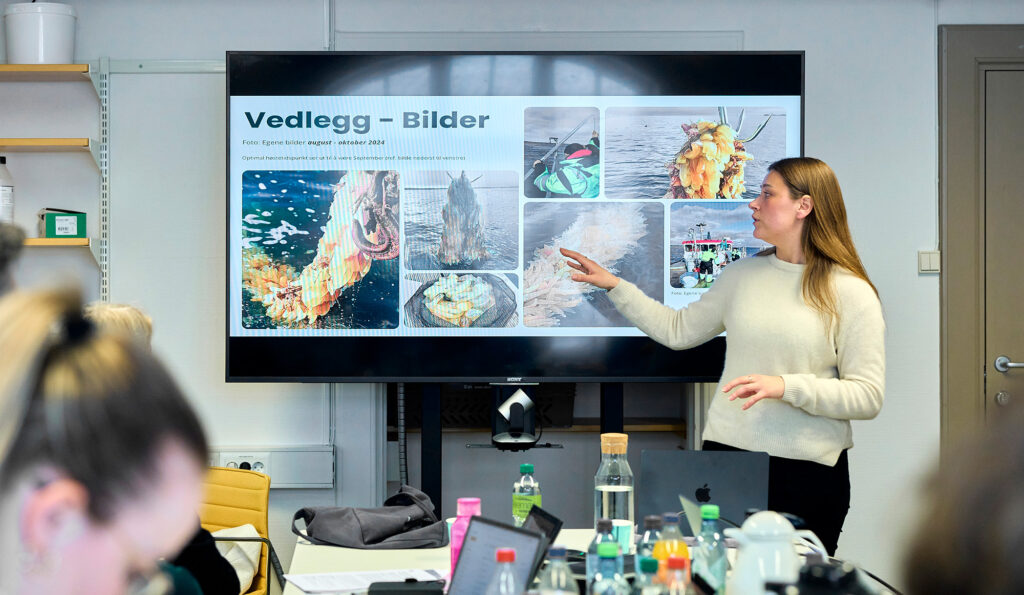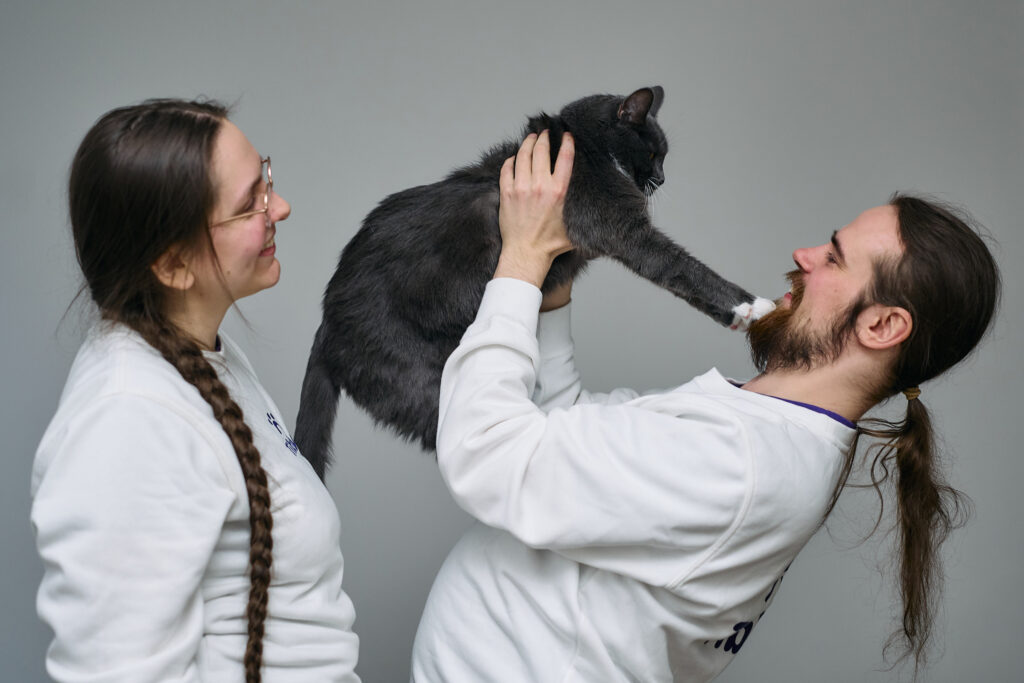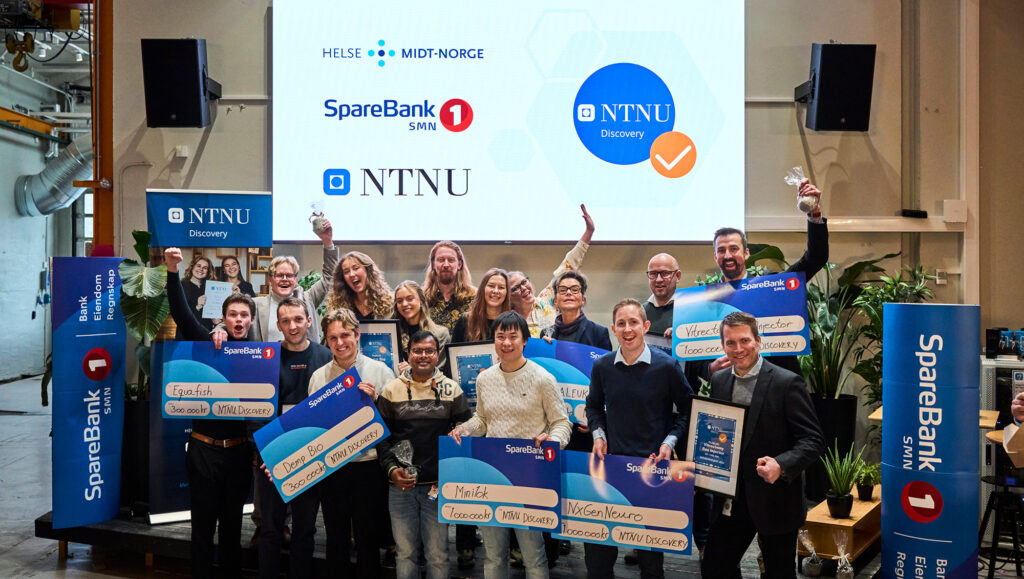En reise med Blueye
Tekst: Anne-Lise Aakervik
Foto: synlig.no
Som lita pleide Christine Spiten å stikke hodet under vann for å utforske det fantastiske livet som fantes der nede. Hun startet tidlig å drømme om å gi folk «øyne» under vann. Nå har hun klart det sammen med teamet i Blueye Robotics!
Med undervannsdronen Blueye blir havet mer tilgjengelig for oss. Dronen gir blant annet hjelp til forskere i kampen mot plast og klimaendringer og til industri som trenger å inspisere alt fra skip til installasjoner. Blueye er utviklet sammen med blant andre CEO og med-gründer Erik Dyrkoren, og i nært samarbeid med automasjonsmiljøene ved NTNU. I dag er det 25 ansatte i Blueye.
Hovedmarkedet er i første omgang forskere og industrien. I tillegg har selskapet inngått partnerskap med blant annet Great Barrier Reef Legacy i Australia, Redningsselskapet og Hurtigruten AS. Sistnevnte skal bruke droner under ekspedisjoner der de vil gi passasjerene muligheten til å oppleve verden under vann.
Dette har vært en viktig milepæl for oss. Vi ønsker at folk som bruker dronen skal dele sin kunnskap og bilder med resten av verden. Vi må gjøre havet tilgjengelig for alle, hvis folk ikke får vite hva som skjer under havflata, vil de heller ikke bry seg. På sett og vis demokratiserer vi kunnskap om havet med Blueye.
Dronen veier knapt 10 kg, og er lett å ta med seg og styres via mobil og en enkel spill-controller. Sammen med en MovieMask får man følelsen av å være under vann. På denne måten kan barn og unge også bruke Blueye for å lære med om livet under vann, og tilstanden i havet.
Mer utvikling med penger
Vi skrev om Blueye første gang i 2015. Da hadde ideen gått til topps på Topplederkonferansen ved NTNU og med det fulgte 250 000 kroner til videre utvikling. Så fikk de penger fra NTNU Discovery, og mer utvikling kunne gjøres.
«Disse midlene gjorde at vi kunne dra i gang et tett samarbeid med flere fagmiljøer» sa Dyrkoren til NTNU Discovery. Han hadde sagt opp stillingen sin ved MARINTEK, gitt avkall på enekontor og flyttet ned til Innovasjonssenter Gløshaugen.
Christine Spiten var da nyutdannet sivilingeniør fra NMBU der hun skrev masteroppgave og kartla markedspotensial for små undervannsdroner, nettopp med fokus på miljøovervåkning. Så flyttet hun til Trondheim og satset alt på å utvikle det hun hadde drømt om lenge. Det startet i fjæresteinene ved hytta i Nevlunghavn.
Drømmen om havet
Havet har alltid vært viktig for den 28 år gamle gründeren. Som lita elsket hun å utforske livet under vann med åpne øyne, og drømte at flere skulle oppleve denne fantastiske verdenen. I Asker, hvor hun vokste opp, lærte hun å seile. I 2007 ble hun Norgesmester i seiling samtidig som hun registrerte mer og mer plast enn skjell på strendene. På samme tid kom nyhetene om de store flakene med plastsuppe (gyrer) som samles av havstrømmene på verdenshavene. De skaper store problemer for fugler, fisk og livet i havet – og oss mennesker (ref. siste forskningsrapporter). Alt dette vekket en dyp bekymring.
Tanken om å la andre få ta del i verden under vann, på egne premisser, vokste seg sterkere. Hun begynte selv å utvikle en liten undervannsdrone, basert på teknologi fra Silicon Valley der hun studerte entreprenørskap ved UC Berkley. I 2014 tok hun så kontakt med miljøet i Trondheim, som er sterke på robotikk og marin teknologi. Og eventyret om Blueye begynte.
Et ansvar
Christine har vært med å legge den langsiktige visjonen for selskapet. Det har ført henne verden over med mål om å knytte partnerskap og skape nettverk. Hun har introdusert Blueye og diskutert havenes tilstand med investorer, forskere, utviklere og andre interesserte miljøer. Blueye treffer tidsånden. Det er økende bevissthet rundt situasjonen i havene og sterke ønsker om å bidra til å redde havene.
– Jeg har fått en stemme gjennom å jobbe med Blueye, og med den opplever jeg at det følger et ansvar for å fremme miljøengasjementet og hva vi ønsker å oppnå med undervannsdronen vår. Jeg vil fremheve at med-gründerne Erik Dyrkoren og Martin Ludvigsen har en stor del av æren for at vi har kommet så langt. Vi har kunder og partnere innen mange ulike næringer, blant annet shipping og akvakultur. Også her opplever vi et økende fokus på bærekraft og miljø. Med våre droner har de bedre kontroll på tilstand på skrog og merder, noe de vinner på både økonomisk og miljømessig.
Internasjonal oppmerksomhet
All innstasen har gitt følger. I 2018 var Christine Spiten listet to ganger i det internasjonale prestisjetunge magasinet «Forbes». Her står hun på en liste over de 30 mest innflytelsesrike teknologene i Europa under 30 år og på «The World’s Top 50 Women in Tech».
– Gullflaks, sier Christine selv. Og hardt arbeid sier vi. Iført nordlandsgenser strikket av mamma, med et vinnende vesen og sjarme snakker hun med tyngde og kunnskap om havenes tilstand og hva vi må gjøre. Det lyttes til hva hun sier, og hun får folk til å bidra.
Blueye har i dag 25 ansatte og bestillinger for mange millioner kroner ligger inne. – Vi har gått fra å lage et øye under vann til å lage en fullverdig undervannsrobot, som fremdeles kan brukes av menigmann. Og nå er vi der! Christine Spiten smiler bredt, over det hele vibrerer pasjonen for havet og alt som lever i det.
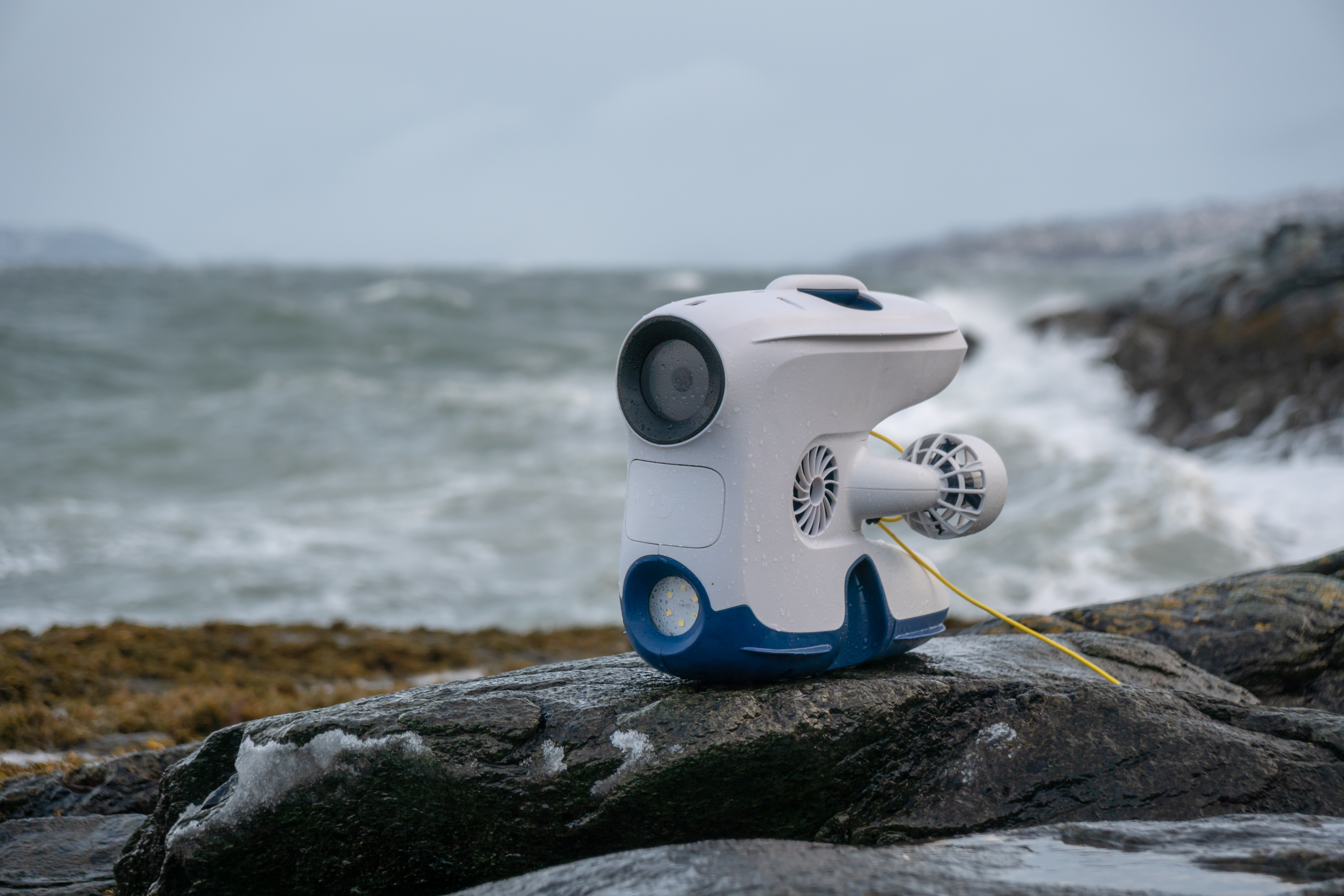
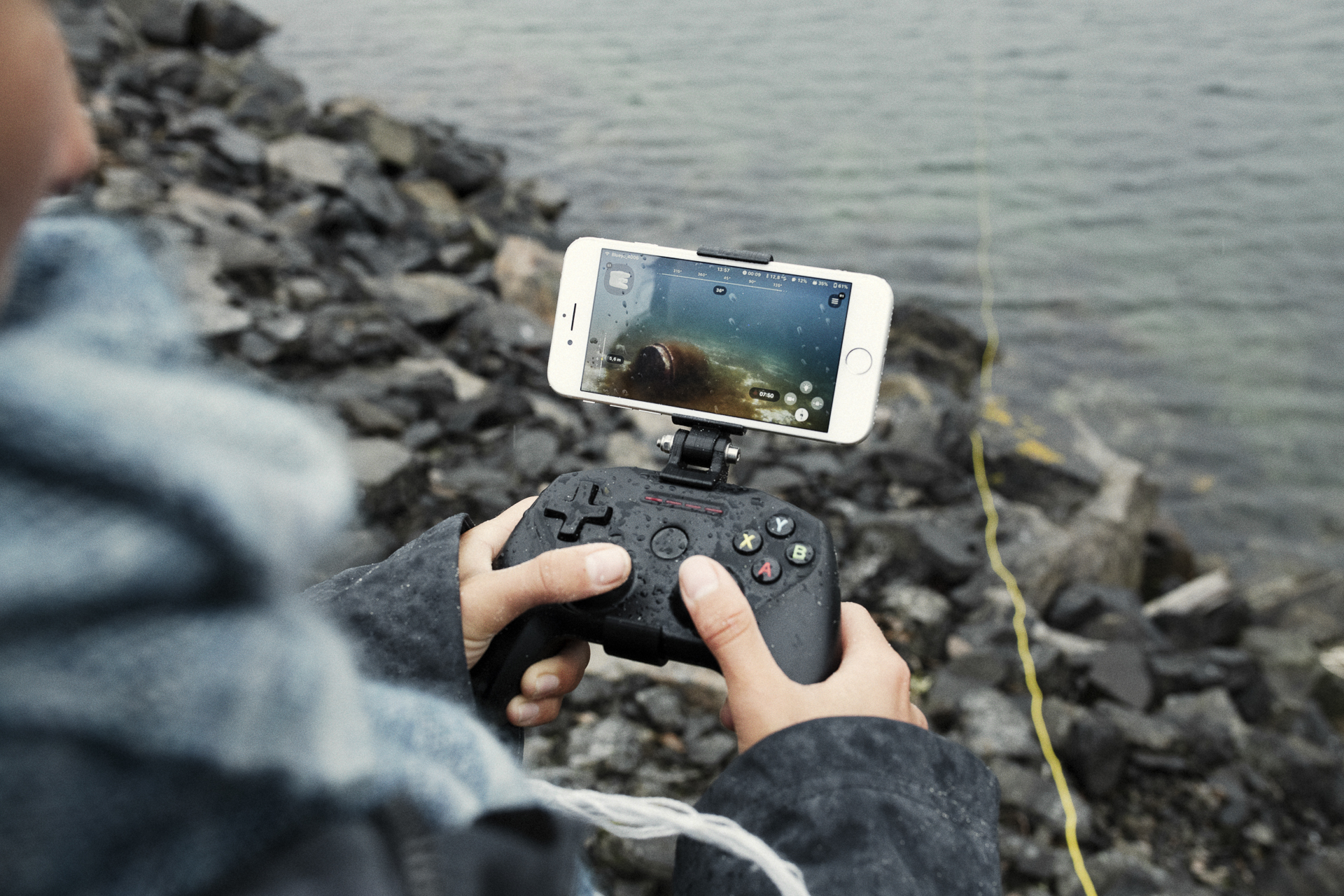
Fakta:
Hvert år havner over 8 millioner tonn plast i havet – 15 tonn i minuttet. Bare 15 prosent av søppelet i havet skylles i land, mens 15 prosent driver rundt på havet. 70 prosent kan vi ikke se fordi det har havnet på bunnen av havet. Halvparten av dyrelivet i havet er borte siden 1970. Samtidig sier forskerne at det vil være mer plast enn fisk i havet i 2050 om ikke utviklingen snur.
Les mer om Blueye på www.blueye.no
Prosjekter og nyheter
Kontakt:
Prosjektleder
Jan Hassel
Epost: jan.hassel@ntnu.no
Telefon: 906 53 180
Kontor: Hovedbygget, sokkel
Håvard Wibe
Epost: havard.wibe@ntnu.no
Telefon: 41 47 37 68
Kontor: Hovedbygget, sokkel


